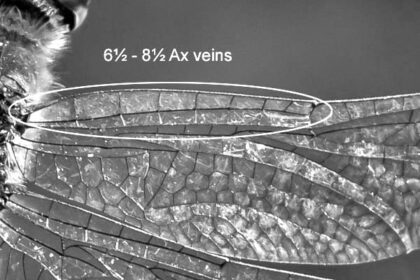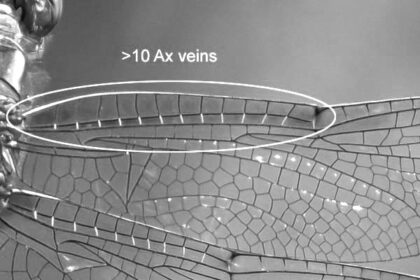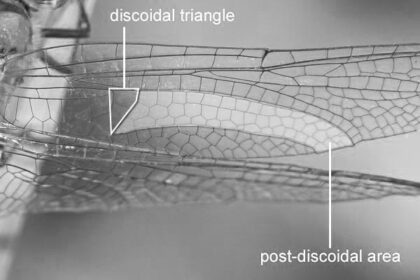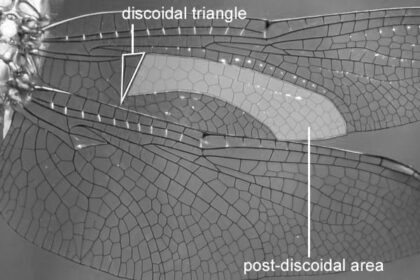Staying inclusive and strictly formal requires a clear view of the fore-wing now, specifically of the grandly named post-discoidal area/field, which could be tricky to see clearly. By inclusive, I mean accounting for much less-than-likely rare vagrants.
One vagrant, the Globe Skimmer/Wandering Glider (Pantala flavescens), is extremely rare with only 4 accepted records in the UK. In the unlikely event that one did turn up, getting a decent picture would be even less likely. So, I’ve decided to exclude that. The second rarity is the Broad Scarlet/Scarlet Darter (Crocothemis erythraea) with 20 or so records. For a lucky observer, particularly on the south coast, that one could be worth covering and climate change will likely increase the chance in the future.
However, 99% of those ending up here will be choosing between the likely UK resident genera [i.e. not rare vagrants] of Skimmers (Orthetrum) species and Darters (Sympetrum) species. Between these two the often more visible antenodal cross (Ax) veins will distinguish.
To account for the remote possibility of a Broad Scarlet/Scarlet Darter (Crocothemis erythraea), given sufficient visible detail the post-discoidal area/field lies outboard of the discoidal triangle in the fore-wing; does this area narrow or expand/remain constant towards the wing tip?




